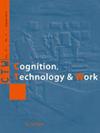大学生颈部残疾的预测因素:一项横断面研究。
IF 3.4
3区 工程技术
Q2 ENGINEERING, INDUSTRIAL
引用次数: 3
摘要
背景:许多横断面研究调查了青少年和工作年龄人群颈部疼痛的预测因素,但包括本科生的研究有限。目的探讨大学生颈部残疾的预测因素。方法采用自我管理的在线调查进行横断面研究。学生完成的调查包括社会人口因素、学术相关因素、健康和生活方式因素,以及标准化问卷,包括颈部残疾指数(NDI)、12项简短健康调查(SF-12)、抑郁焦虑压力量表(DASS-21)和匹兹堡睡眠质量指数(PSQI)。报告NDI分数高于15分的学生被认为患有颈部残疾。使用多变量logistic回归模型来确定颈部残疾的重要预测因素。结果1292名学生中,20.8%报告颈部残疾。在所有可能的预测因子中,学生专业满意度(OR 1.46 [95% CI 1.06-2.01];p = 0.019), das -21焦虑评分(OR 1.06 [95% CI 1.03-1.09];p < 0.001), SF-12总分(OR 0.89 [95% CI 0.86-92];p < 0.001), PSQI评分(OR 1.21 [95% CI 1.15-1.28];P < 0.001)是颈部残疾的唯一显著预测因子。结论学业压力和焦虑水平的升高,生活质量和睡眠质量的下降与大学生颈部残疾的增加有关。本文章由计算机程序翻译,如有差异,请以英文原文为准。
Predictors of neck disability among undergraduate students: A cross-sectional study.
BACKGROUND
Many cross-sectional studies have examined the predictors of neck pain among adolescents and working-age populations, but there are limited studies included undergraduate students.
OBJECTIVE
To investigate the predictors of neck disability among undergraduate students.
METHODS
A cross-sectional study using a self-administered online survey. Students completed the survey that included socio-demographic factors, academic-related factors, health and lifestyle factors, and standardized questionnaires including Neck Disability Index (NDI), 12-Item Short-Form Health Survey (SF-12), Depression Anxiety Stress Scales (DASS-21), and Pittsburgh Sleep Quality Index (PSQI). Students who reported an NDI score higher than 15 were considered as having a neck disability. A multivariable logistic regression model was used to identify the significant predictors of neck disability.
RESULTS
Of all students (n = 1292), 20.8% reported neck disability. Among all possible predictors, students' major satisfaction (OR 1.46 [95% CI 1.06-2.01]; p = 0.019), DASS-21 anxiety score (OR 1.06 [95% CI 1.03-1.09]; p < 0.001), SF-12 total score (OR 0.89 [95% CI 0.86-92]; p < 0.001), and PSQI score (OR 1.21 [95% CI 1.15-1.28]; p < 0.001) were the only significant predictors of neck disability.
CONCLUSIONS
Increased levels of academic stressors and anxiety, and decreased levels of quality of life and sleep quality are associated with increased neck disability among undergraduate students.
求助全文
通过发布文献求助,成功后即可免费获取论文全文。
去求助
来源期刊

Cognition Technology & Work
ENGINEERING, INDUSTRIAL-
CiteScore
6.90
自引率
7.70%
发文量
26
审稿时长
>12 weeks
期刊介绍:
Cognition, Technology & Work focuses on the practical issues of human interaction with technology within the context of work and, in particular, how human cognition affects, and is affected by, work and working conditions.
The aim is to publish research that normally resides on the borderline between people, technology, and organisations. Including how people use information technology, how experience and expertise develop through work, and how incidents and accidents are due to the interaction between individual, technical and organisational factors.
The target is thus the study of people at work from a cognitive systems engineering and socio-technical systems perspective.
The most relevant working contexts of interest to CTW are those where the impact of modern technologies on people at work is particularly important for the users involved as well as for the effects on the environment and plants. Modern society has come to depend on the safe and efficient functioning of a multitude of technological systems as diverse as industrial production, transportation, communication, supply of energy, information and materials, health and finance.
 求助内容:
求助内容: 应助结果提醒方式:
应助结果提醒方式:


